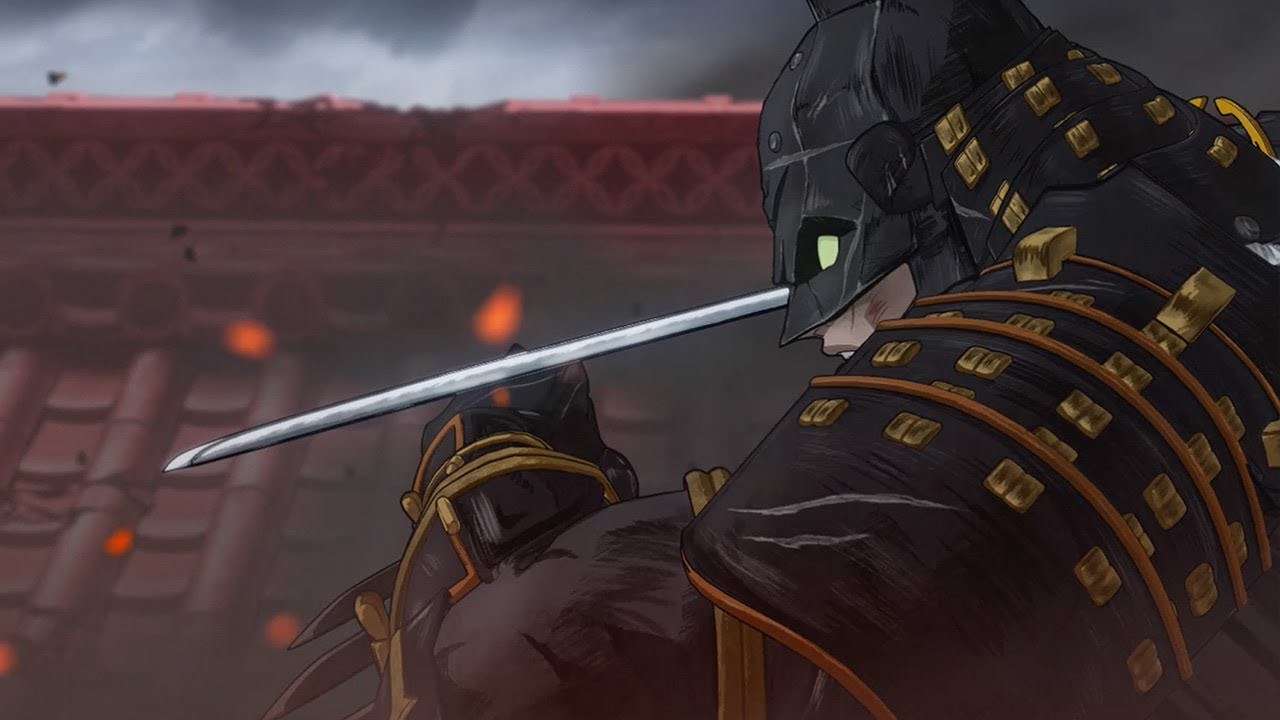Batman Ninja is one of the most unique takes on Batman we've ever seen. Although it was produced by Warner Bros., the movie was primarily created by an entirely Japanese team, including director Junpei Mizusaki and character designer Takashi Okazaki (famous for creating the equally awesome Afro Samurai). The movie sends Batman and many of his allies and enemies back in time to feudal Japan, where they battle for the fate of history.
Often when Japanese anime is localized for Western audiences, fans prefer the original Japanese version with English subtitles, rather than a "dubbed" version with English-language voice actors. With Batman Ninja, which is out digitally this week, it's not that simple. GameSpot chatted recently with the English language version's producers and writers, Leo Chu and Eric Garcia, to find out why.
"The Japanese version is different," Chu said. "All the visuals are exactly the same in the movie, but the dialogue is maybe 90% different."
"Some scenes are actually absolutely the same, and then some scenes just didn't quite make sense to us," Garcia said. "We're just like okay, this one we should change."
Chu and Garcia said they didn't even have a general outline of Batman Ninja's plot--much less a detailed script--throughout the movie's production, including while they wrote the English language version. That stemmed from the differences between Western and Japanese animation processes, they said.
"[In Japanese animation], the writing and acting typically come at the end of the anime process, where in the Western process, the writing comes at the beginning, because the anime is so art and visually driven," Chu said. "You start getting storyboards and animation before you know exactly what the story is, so a lot of our job was trying to cobble it together and figure out how pieces fit together and what people could be saying."
"The Japanese process is based on more like manga," Garcia said. "Manga's just visual storytelling. There isn't even that much dialogue."

At some point, they did receive a rough, literal translation of the Japanese script, but it was only six pages long, and most of it was not usable.
"The literal translation doesn't really service the story the way the American audience would understand, and some of the jokes just didn't translate at all," Garcia said. They also received storyboards from the Japanese artists, though they were often so rough that it was difficult to tell which characters were which, much less piece together a comprehensive idea of what was going on in the movie. Often they'd have to go back months after writing something and redo it when they received more context or information about the scene.
"It was kind of coming through in pieces," Garcia said.
"The translation was literally six sheets of paper, but just the dialogue translated very roughly into English," Chu said. "A lot of the time, you could not tell what was going on...you look at it and it's like, 'That is either Nightwing or Red Robin, I have no idea.'"
"We were guessing, yeah," Garcia added.
On the bright side, the whole unorthodox process gave them the freedom to mold this into the Batman story they envisioned, and both Warner Bros. and the Japanese team were happy to oblige.

"Warner Brothers was very, very hands off," Chu said. "They really wanted the Japan team to make it very authentically anime, and our job was to make it authentically Batman. And there was an enormous amount of trust from the Japan team on us. They were just like, 'Go do your thing.'"
This wasn't even a new experience for Chu and Garcia. They'd worked within similar frameworks before, on the Studio Ghibli film My Neighbors the Yamadas, and elsewhere.
"My first exposure to the anime process was working with [Hayao] Miyazaki on Spirited Away," Chu said. "It was just very interesting watching him do the story. Like, he kind of thinks up the story, and then you don't really write it, you start sort of thumb-nailing out like, what key visual moments might be, and then you start storyboarding and then you start animating.
"And I was like, 'OK, but what are you animated to?' He's like, 'Oh, we just make the mouths move.' And then I was like, 'But is there dialogue?" And he's like, 'No, no. We add the dialogue at the end.' And you're like, 'Oh, that's really weird.' And people always complain about, 'Oh, I'm going to watch the original Japanese version with English sub, not the English dub version,' but the truth is the Japanese version is dubbed as well."
For those who want the original Japanese version, it's available right now alongside the English version. But don't refer to either one as a dub--unlike with most anime, the Japanese and English versions of Batman Ninja were developed separately but simultaneously. And given how different they apparently are, it may well be worth watching both versions.
